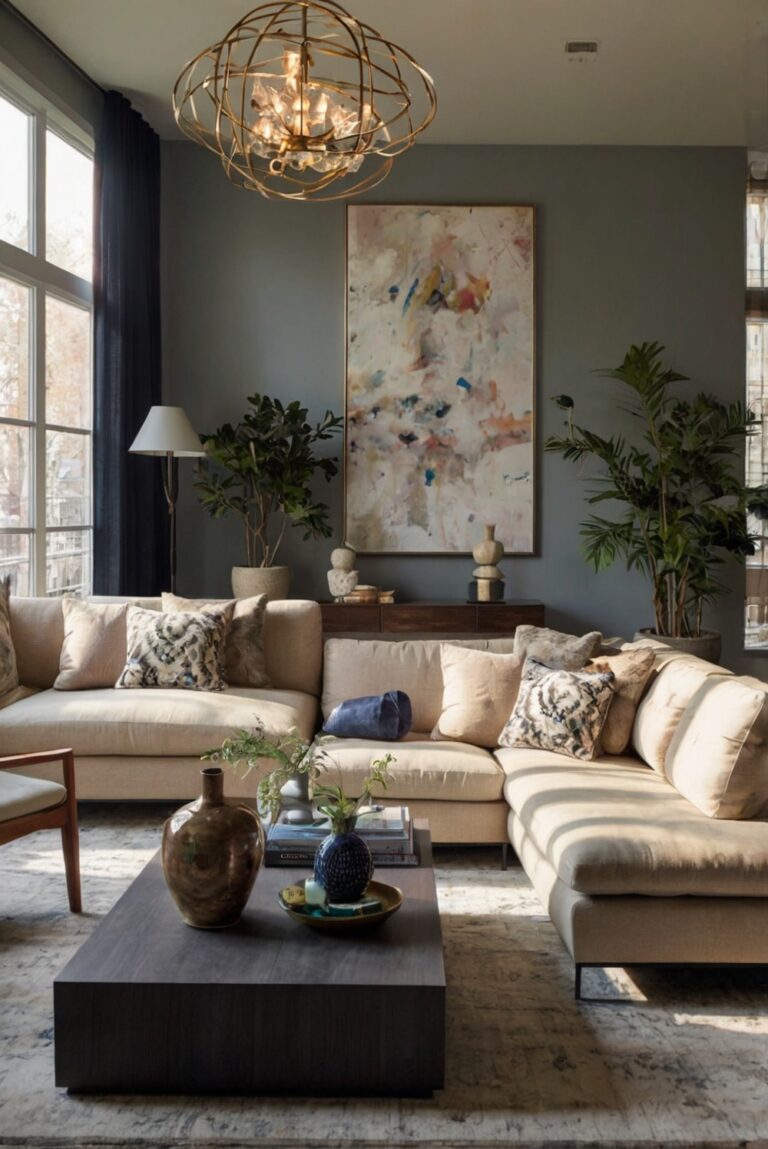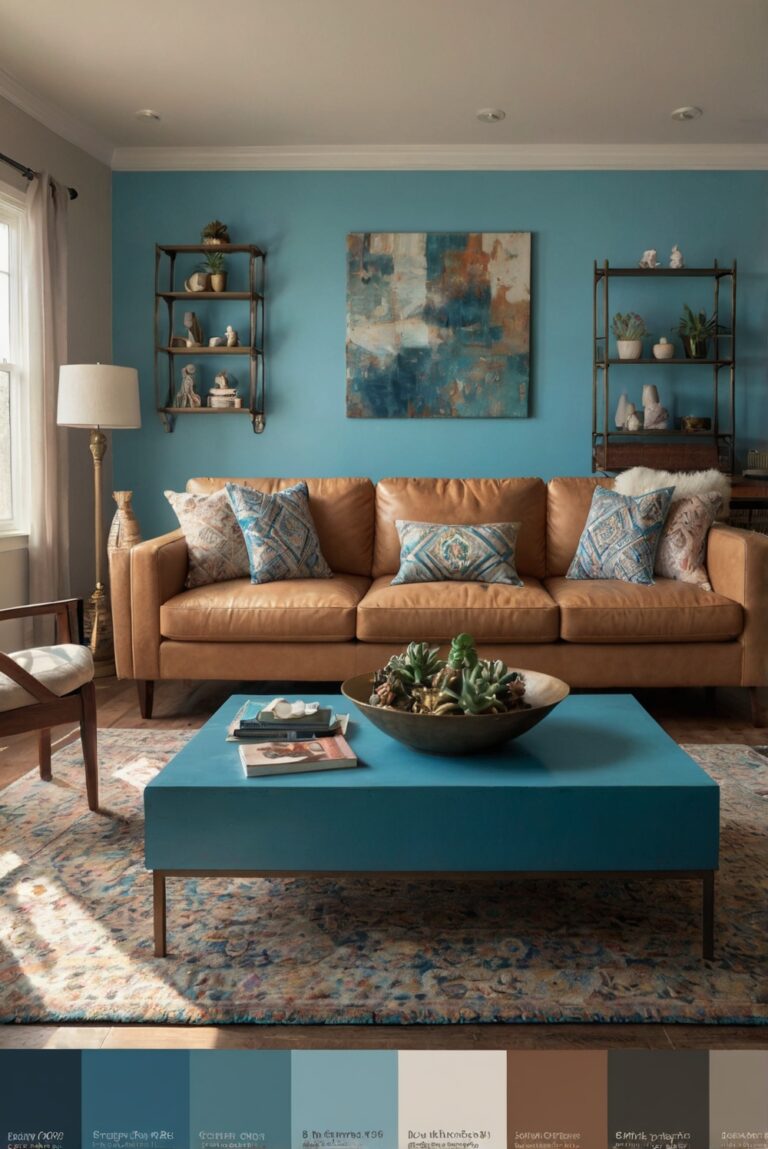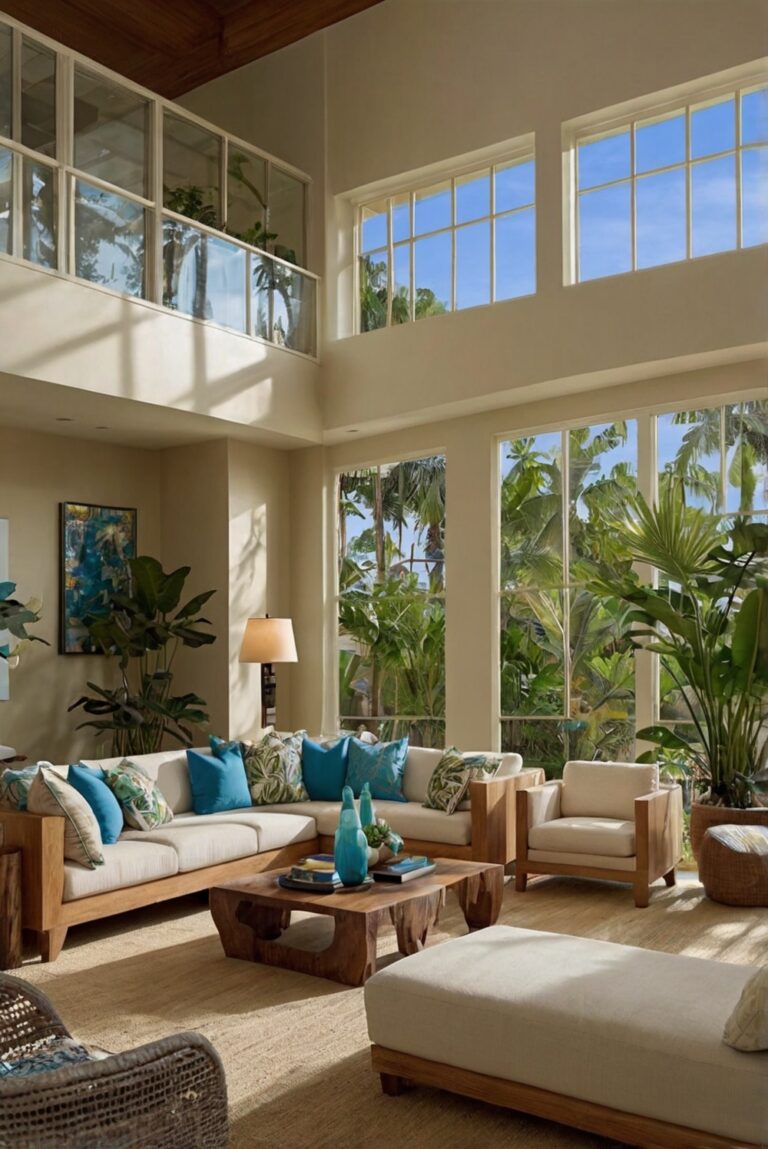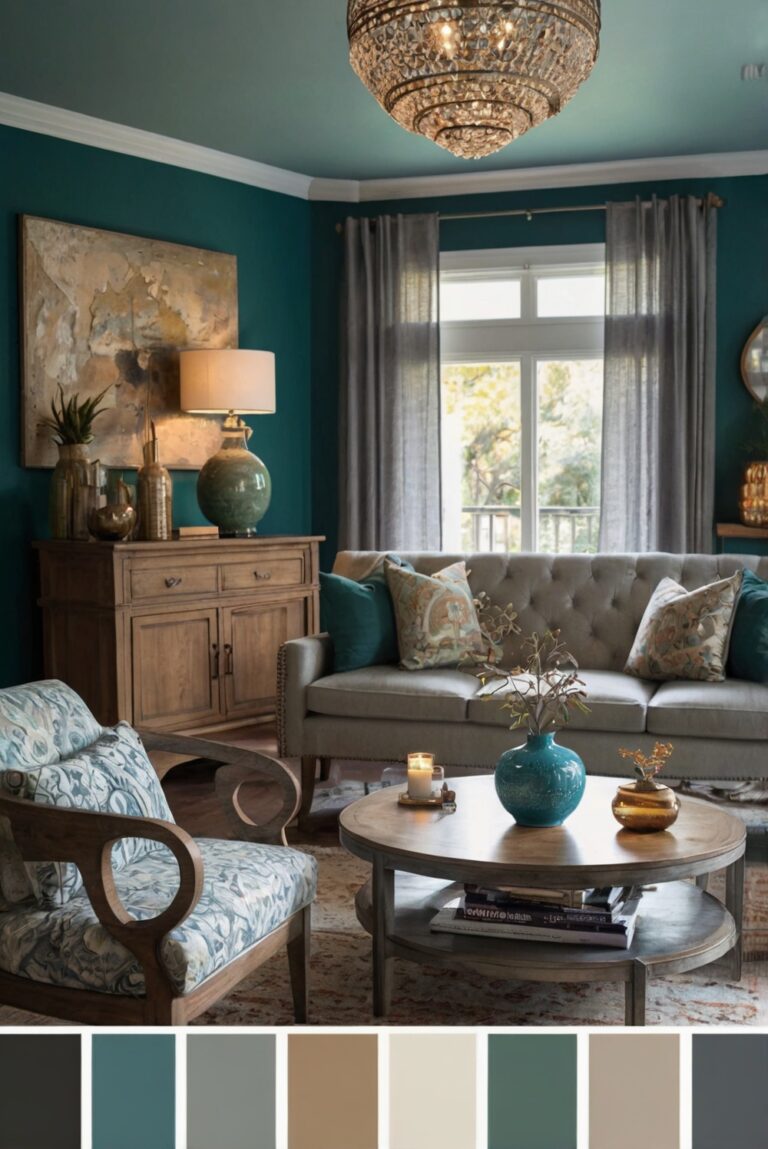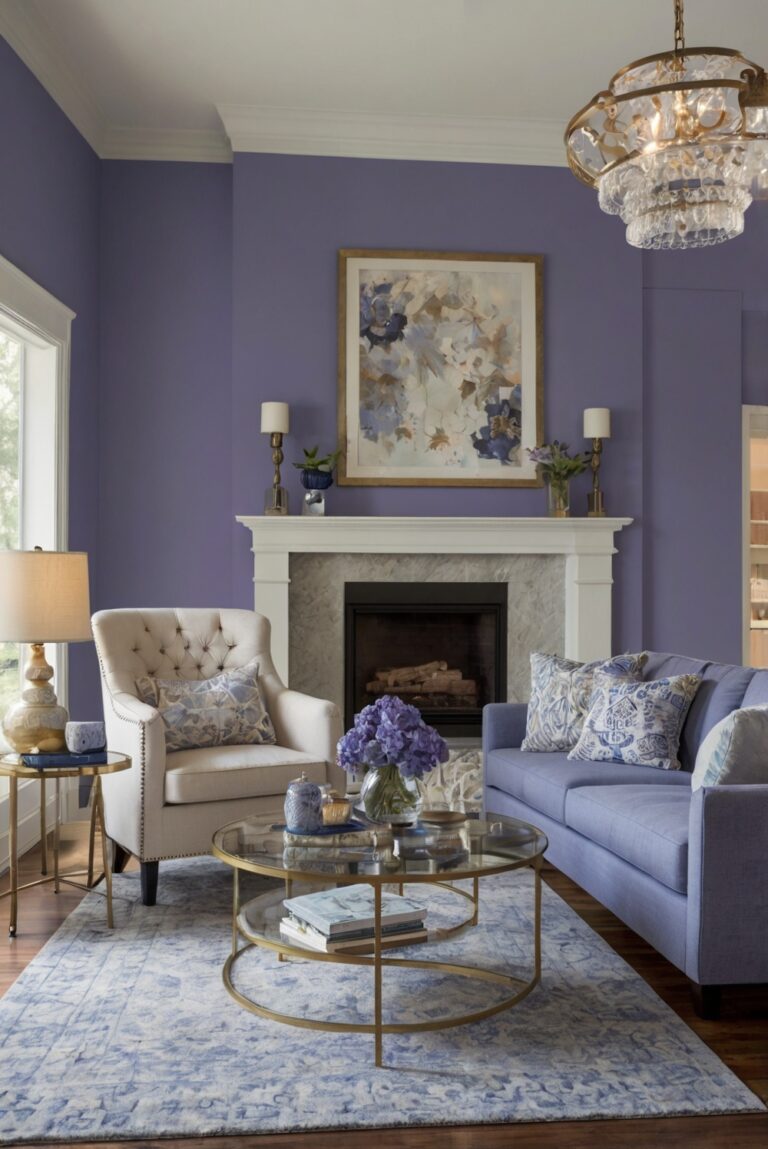How do you create a cohesive color scheme with a sofa?
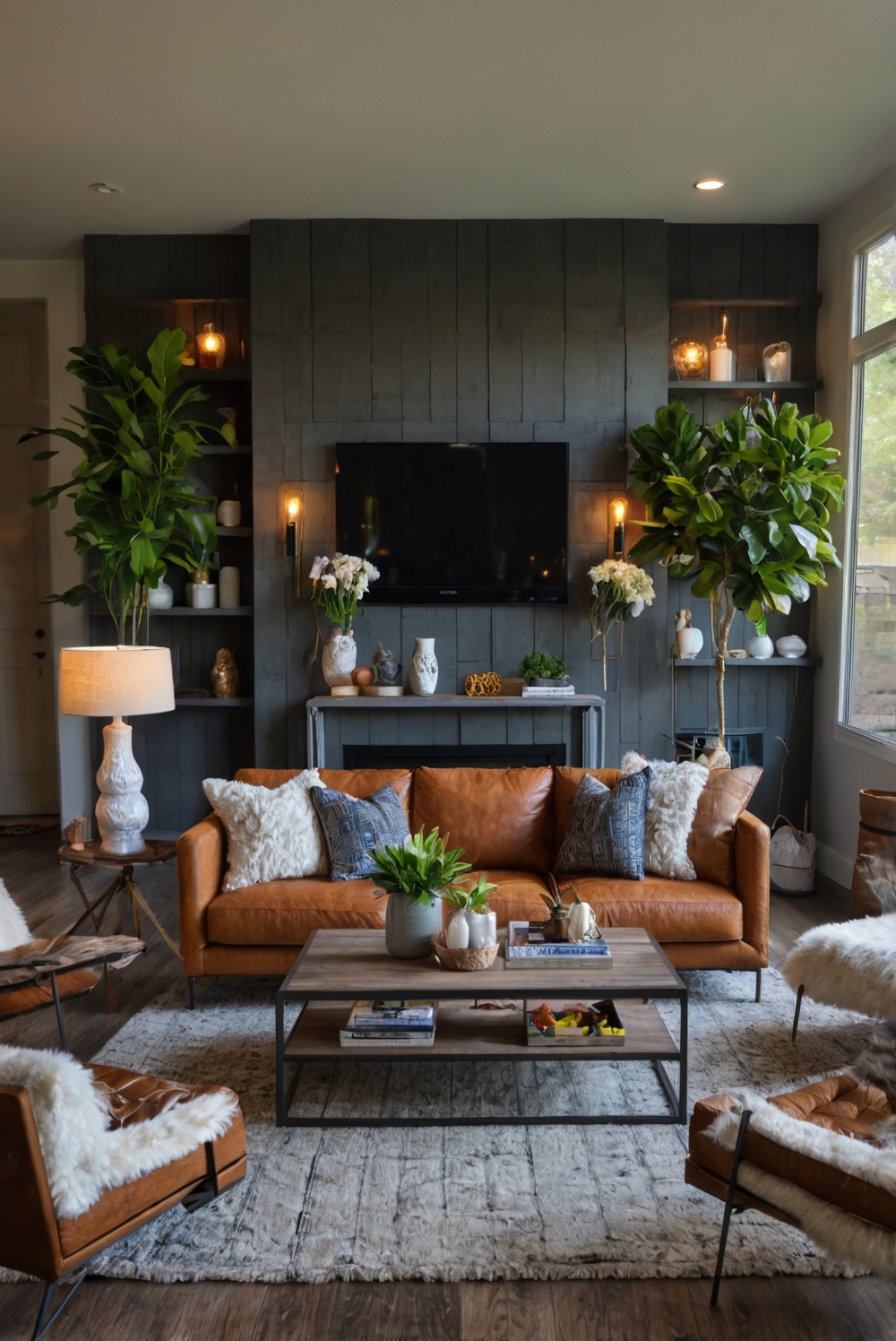
Discover how interior designers create a cohesive color scheme with a sofa. Explore daily routines and decor tips for infusing style and harmony into your living space.
How do you create a cohesive color scheme with a sofa?
To create a cohesive color scheme with a sofa, start by selecting a sofa color that complements the existing palette of your home decor interior design. Consider the walls, flooring, and other furniture pieces when choosing the sofa color. Use color matching painting techniques to find the perfect shade for your sofa. You can also add throw pillows, blankets, and rugs in coordinating colors to tie the look together. It’s important to consider the natural lighting in the room as it can affect how the colors appear. Remember to use primer paint for walls if needed to ensure the colors look their best. By following these steps and focusing on home decorating elements, you can create a harmonious and appealing color scheme with your sofa.
*space
– home interior
– home interior design
– space planning
– interior design space planning
– home decorating
– decorating interiors
– interior bedroom design
– living room interior
– home decor interior design
– designer wall paint
– primer paint for walls
– color matching painting
– paint color match
– home paint colors
How to Choose the Right Color Scheme for Your Sofa
When creating a cohesive color scheme with a sofa, it is essential to start by selecting the right colors that complement each other. Consider the style of your sofa and the overall theme of the room. Look for colors that will harmonize with the sofa while enhancing the space’s aesthetics. Neutral tones like beige, gray, or cream work well with most sofa colors and can create a versatile base for your color scheme.
Matching Accent Colors
Once you have chosen a base color for your sofa, it’s time to pick accent colors that will add depth and personality to the room. Consider using a color wheel to find complementary or analogous colors that will go well with your sofa. For example, if you have a blue sofa, you can pair it with shades of yellow or green for a harmonious look. Experiment with different combinations until you find the perfect balance of colors that work well together.
Adding Texture and Patterns
Incorporating texture and patterns into your color scheme can help create visual interest and dimension in the room. Consider adding throw pillows, blankets, or rugs with different textures like velvet, silk, or wool to enhance the sofa’s color and style. Mixing patterns like stripes, florals, or geometric shapes can also add a layer of complexity to the color scheme while tying the room together.
Consider Natural Light and Room Size
When choosing colors for your sofa and the overall color scheme of the room, it’s important to consider the amount of natural light the room receives and the size of the space. Darker colors can make a room feel cozy and intimate but may overwhelm a small space or a room with limited natural light. Lighter colors can make a room feel more spacious and airy but may lack warmth and coziness. Finding the right balance of colors based on the room’s lighting and size is essential for creating a cohesive color scheme.
Experiment and Personalize
Creating a cohesive color scheme with a sofa is a creative process that allows you to experiment with different colors, textures, and patterns to reflect your personal style. Don’t be afraid to mix and match colors that you love or try unconventional combinations to create a unique and personalized look. Consider incorporating personal items like artwork, photographs, or decorative objects that hold sentimental value and can inspire your color choices. Remember that creating a cohesive color scheme is not about following strict rules but about expressing your individuality and creating a space that feels comfortable and inviting.
In conclusion, creating a cohesive color scheme with a sofa requires careful consideration of the sofa’s color, style, and the overall theme of the room. By choosing the right base color, matching accent colors, adding texture and patterns, considering natural light and room size, and experimenting with personal touches, you can achieve a harmonious and visually appealing color scheme that reflects your unique style and personality. Don’t be afraid to get creative and have fun with the process of selecting colors and designing a space that feels like home.
1. What are some key strategies for creating a cohesive color scheme with a sofa?
To create a cohesive color scheme with a sofa, consider using a color wheel to identify complementary or analogous colors that work well together. You can also take inspiration from the existing colors in the room or the sofa itself to build a harmonious palette. Additionally, incorporating neutral colors as a base can help tie the look together and prevent overwhelming the space with too many bold colors.
2. How can you incorporate accent colors with a sofa to enhance the overall color scheme?
One way to incorporate accent colors with a sofa is to use throw pillows, blankets, or rugs in complementary or contrasting shades. These accents can add depth and visual interest to the color scheme while tying different elements of the room together. Another option is to introduce small decor pieces like vases, artwork, or curtains in accent colors that complement the sofa, creating a cohesive and balanced look.
3. What role does texture play in creating a cohesive color scheme with a sofa?
Texture can enhance the overall color scheme by adding dimension and visual interest to the space. Mixing different textures like velvet, linen, leather, or wool can create a layered and inviting look that complements the sofa’s color palette. Textured elements also help break up the monotony of solid colors and add depth to the room, making the color scheme feel more cohesive and dynamic.
4. How can lighting affect the perception of color in a room with a sofa?
Lighting plays a crucial role in how colors are perceived in a room with a sofa. Natural light can enhance the vibrancy of colors and bring out different tones, while artificial lighting can alter the color temperature and intensity. To create a cohesive color scheme, consider the direction and intensity of light in the room when choosing colors for the sofa and other decor elements. Warm lighting can enhance warm tones, while cool lighting can make cool tones appear more prominent, so it’s essential to balance the light sources to achieve a harmonious look.
5. What are some common mistakes to avoid when creating a cohesive color scheme with a sofa?
One common mistake to avoid is choosing colors that clash with the sofa or overwhelm the space. It’s important to consider the size and style of the sofa when selecting colors to ensure they complement rather than compete with each other. Another mistake is neglecting the impact of lighting on color perception, which can lead to mismatched tones or an unbalanced color scheme. Additionally, using too many accent colors or textures can make the space feel cluttered and chaotic, so it’s best to keep the color palette cohesive and streamlined for a harmonious look.

